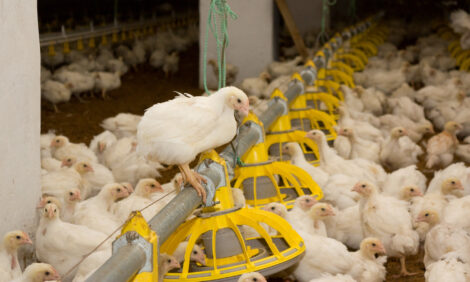



Killing of Spent Laying Hens Using Carbon Dioxide in Poultry Barns
Examining records from Swedish farms over a three-year period, researchers in Sweden found that overall, whole-house killing of spent hens using carbon dioxide gas was carried out correctly but they were able to identify some areas for potential errors.According to Jenny Yngvesson and colleagues at the Swedish University of Agricultural Sciences, laying hens in their country are killed using the following methods:
- traditional slaughter
- on-farm with carbon dioxide in a mobile container combined with a grinder; or
- with carbon dioxide inside the barn.
In a paper in the journal, Animal Welfare, they report that the number of hens killed using the latter method has increased.
During these killings, a veterinarian is required to be present and report to the Swedish Board of Agriculture. Data were registered during four commercial killings and extracted from all official veterinary reports at carbon dioxide whole-house killings in 2008 to 2010.
On-farm monitoring showed that temperature decreased greatly and with high variability. The time until birds became unconscious after coming into contact with the gas, based on time until loss of balance, was between three and five minutes.
Veterinary reports show that 1.5 million laying hens were killed, in 150 separate instances.
The most common non-compliance with legislation was failure to notify the regional animal welfare authorities prior to the killings.
Six out of 150 killings were defined as animal welfare failures, for example, delivery of insufficient carbon dioxide or failure to seal buildings to achieve adequate gas concentration.
Eleven were either potentially or completely unacceptable from the perspective of animal welfare.
Yngvesson and colleagues concluded that, overall, the carbon dioxide whole-house gas killing of spent hens was carried out in accordance with the appropriate legislation.
They added that death was achieved reliably. However, there remain several risks to animal welfare and increased knowledge would appear vitalin order to limit mistakes related to miscalculations of house volume, improper sealing or premature ventilation turn-off.
Reference
Berg C., J. Yngvesson, S. Nimmermark, V. Sandström and B. Algers. 2014. Killing of spent laying hens using CO2 in poultry barns. Animal Welfare. 23: 445-457. doi: 10.7120/09627286.23.4.445
November 2014









